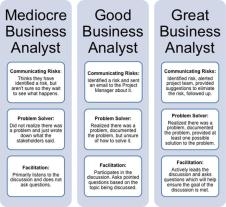What are the responsibilities of a top level manager?
Top-level managers, often referred to as senior executives or C-suite executives, play a crucial role in the strategic direction and overall management of an organization. Their responsibilities are broad and encompass guiding the entire organization toward its goals and objectives. Here's an overview of the key responsibilities of top-level managers:
Setting Strategic Direction:
- Top-level managers are responsible for defining the organization's long-term vision, mission, and strategic goals. They develop strategies to achieve these objectives and ensure alignment with the organization's purpose and values.
Decision-Making:
- They make high-stakes decisions that impact the organization's future, such as major investments, mergers and acquisitions, market expansions, and diversification.
Resource Allocation:
- Top-level managers allocate resources (financial, human, and technological) across different departments and initiatives to ensure efficient operations and goal attainment.
Leadership and Team Building:
- They build and lead the executive team, often composed of other senior executives, ensuring that each department or division has effective leadership. They set a tone for organizational culture and values.
Financial Management:
- They oversee financial matters, including budgeting, financial reporting, and financial strategy. They ensure the organization's financial health and sustainability.
Stakeholder Relations:
- Top-level managers are responsible for maintaining relationships with key stakeholders, such as shareholders, board members, regulators, and external partners. They communicate the organization's performance and strategic direction.
Risk Management:
- They identify and assess risks that could impact the organization's success. Top-level managers develop risk mitigation strategies and contingency plans.
Innovation and Change Management:
- They drive innovation and change initiatives to adapt to evolving markets and technologies. They foster a culture of innovation and continuous improvement.
Legal and Ethical Compliance:
- They ensure the organization operates within legal and ethical boundaries, complying with laws and regulations relevant to the industry.
Performance Monitoring:
- Top-level managers monitor the organization's performance against strategic goals and key performance indicators (KPIs). They make adjustments and reallocate resources as needed to stay on course.
Communication:
- Effective communication is a crucial responsibility. They communicate the strategic direction, performance updates, and other critical information to various stakeholders within and outside the organization.
Crisis Management:
- In times of crises, top-level managers take charge and lead the organization through challenges, making tough decisions to ensure its survival and recovery.
Corporate Social Responsibility (CSR):
- They may oversee CSR initiatives, ensuring the organization engages in ethical and socially responsible practices.
Governance:
- They work closely with the board of directors (if applicable) to ensure proper governance and oversight of the organization's activities.
Succession Planning:
- Top-level managers often play a role in identifying and developing future leaders within the organization through succession planning.
The specific responsibilities of top-level managers can vary depending on the size and nature of the organization, its industry, and its current strategic priorities. However, their primary focus is on long-term strategic planning, decision-making, and ensuring the organization's success in a competitive and ever-changing business environment.
The Role of a Top-Level Manager: Key Responsibilities
Top-level managers are responsible for the overall success of an organization. They set the company's vision and strategy, and they oversee the work of all other employees. Top-level managers also make decisions about the company's finances, products, and services.
Some of the key responsibilities of top-level managers include:
- Setting the company's vision and strategy. Top-level managers are responsible for setting the company's long-term goals and for developing a plan to achieve those goals. They must also be able to adapt the company's strategy in response to changes in the market or in the competitive landscape.
- Overseeing the work of all other employees. Top-level managers are responsible for hiring, training, and evaluating all other employees. They must also be able to motivate and inspire employees to achieve their goals.
- Making decisions about the company's finances, products, and services. Top-level managers are responsible for making decisions about how to allocate the company's resources. They must also be able to develop and market new products and services.
Responsibilities of Senior Management: Leading and Directing
Senior management is a term used to describe the highest level of management in an organization. Senior managers are responsible for the overall success of the organization and for setting the company's direction.
Some of the key responsibilities of senior managers include:
- Leading and directing the organization. Senior managers are responsible for setting the company's vision and strategy, and for developing and implementing plans to achieve those goals. They must also be able to communicate the company's vision and strategy to employees and to stakeholders.
- Making key decisions. Senior managers are responsible for making key decisions about the company's finances, products, and services. They must also be able to make decisions quickly and effectively, even in uncertain or challenging situations.
- Building and maintaining relationships. Senior managers are responsible for building and maintaining relationships with key stakeholders, such as customers, suppliers, investors, and government officials.
Top-Level Management: Navigating Leadership Duties
Navigating leadership duties as a top-level manager can be challenging. Top-level managers must be able to balance a variety of competing demands, including the needs of employees, customers, and shareholders.
Here are some tips for navigating leadership duties as a top-level manager:
- Set clear priorities. Top-level managers must be able to set clear priorities for themselves and for their team. This will help to ensure that they are focused on the most important tasks and that they are not spread too thin.
- Delegate effectively. Top-level managers cannot do everything themselves. They must be able to delegate tasks effectively to their team members. This will free up their time so that they can focus on the most important tasks.
- Communicate effectively. Top-level managers must be able to communicate effectively with employees, customers, and shareholders. They must be able to clearly articulate their vision and strategy, and they must be able to listen to and address feedback.
- Be decisive. Top-level managers must be able to make decisions quickly and effectively, even in uncertain or challenging situations.
- Be adaptable. The business world is constantly changing, and top-level managers must be able to adapt to change. They must be able to think strategically and to develop new plans to achieve their goals.
Navigating leadership duties as a top-level manager is challenging, but it is also rewarding. Top-level managers have the opportunity to make a real difference in the success of their organization and in the lives of their employees.












